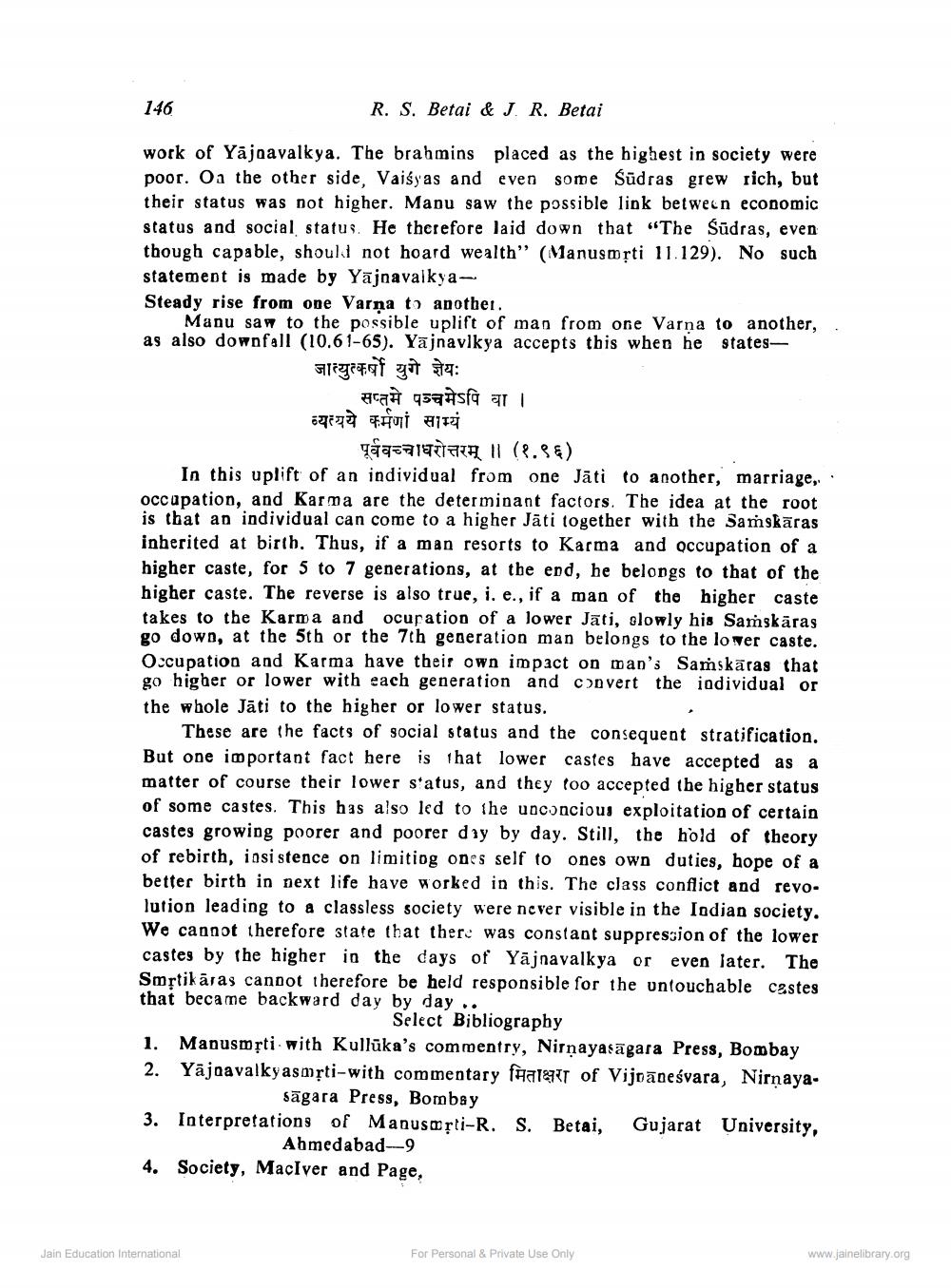________________
146
R. S. Betai & J. R. Betai
work of Yājaavalkya. The brahmins placed as the highest in society were poor. On the other side, Vaiśyas and even some Sūdras grew rich, but their status was not higher. Manu saw the possible link between economic status and social status. He therefore laid down that “The Sūdras, even though capable, should not hoard wealth" (Manusmrti 11.129). No such statement is made by YājnavalkyaSteady rise from one Varņa to another.
Manu saw to the possible uplift of man from one Varna to another, as also downfall (10.61-65). Yājnavlkya accepts this when he states
जात्युत्कर्षो युगे ज्ञेयः
सप्तमे पञ्चमेऽपि वा । व्यत्यये कर्मणां साम्यं
Tá = I TA 11 (8.38) In this uplift of an individual from one Jāti to another, marriage, occupation, and Karma are the determinant factors. The idea at the root is that an individual can come to a higher Jāti together with the Samskāras inherited at birth. Thus, if a man resorts to Karma and occupation of a higher caste, for 5 to 7 generations, at the end, he belongs to that of the higher caste. The reverse is also true, i. e., if a man of the higher caste takes to the Karma and ocupation of a lower Jāti, slowly his Samskaras go down, at the 5th or the 7th generation man belongs to the lower caste. Occupation and Karma have their own impact on man's Saṁskäras that go higher or lower with each generation and convert the individual or the whole Jāti to the higher or lower status.
These are the facts of social status and the consequent stratification. But one important fact here is that lower castes have accepted as a matter of course their lower status, and they too accepted the higher status of some castes. This has also led to the unconcious exploitation of certain castes growing poorer and poorer day by day. Still, the hold of theory of rebirth, insistence on limiting ones self to ones own duties, hope of a better birth in next life have worked in this. The class conflict and revolution leading to a classless society were never visible in the Indian society. We cannot therefore state that there was constant suppression of the lower castes by the higher in the days of Yājnavalkya or even later. The Smrtikāras cannot therefore be held responsible for the untouchable castes that became backward day by day ..
Select Bibliography 1. Manusmrti with Kullūka's commentry, Nirnayasāgara Press, Bombay 2. Yājoavalky asmrti-with commentary fHatar of Vijaneśvara, Nirnaya
sāgara Press, Bombay 3. Interpretations of Manusmrti-R. S. Betai, Gujarat University,
Ahmedabad-9 4. Society, MacIver and Page,
Jain Education International
For Personal & Private Use Only
www.jainelibrary.org




